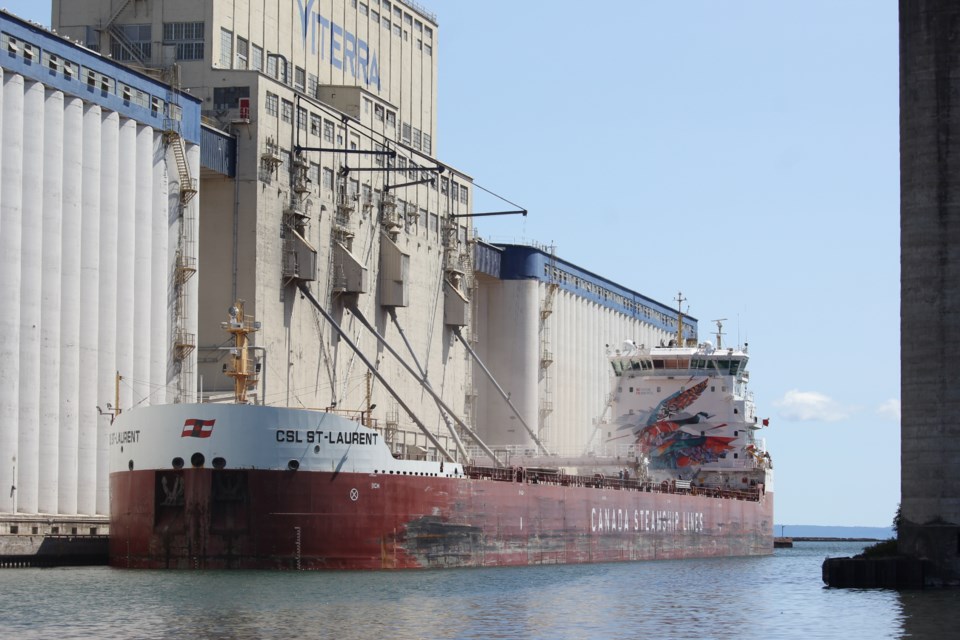THUNDER BAY – The Port of Thunder Bay is reporting strong shipping numbers for June that remain above its five-year average, but fall well short of a bumper year in 2020.
“What we’ve seen over the last few months is a bit of a softening in grain shipments, which is really more of a return to normal levels we’ve seen over the past five or ten years,” said Chris Heikinnen, communications and research coordinator for the Port of Thunder Bay.
That was bound to bring the port’s numbers back down to earth, with grain accounting for about 80 per cent of all cargo shipments.
The port moved 582,443 metric tonnes of grain in June, down from 905,242 last year.
It’s year-to-date grain total of 2,712,483 metric tonnes is still about 7 per cent above the five-average, and in the top three results over the past 25 years.
The port’s total shipping numbers, accounting for all types of cargo, fell to 3,090,217 metric tonnes by the end of June. That’s down from 3,644,137 at the same point last year, but above the five-year average of 2,987,257.
The number of vessels visiting the port also fell to 147 over the first six months of 2021, from 169 last year. Much of that came due to a drop in visits from foreign vessels.
Other types of cargo saw a rebound from five-year lows experienced in 2020, with gains in June for coal and potash shipments.
Heikinnen also pointed to strong imports of steel, phosphate fertilizer, and some project cargo. In June, that included dimensional engines, structural steel, and pre-fab modules.
He excepted continued strength in project cargo this year, which will benefit from recent infrastructure expansions at the port.
A three-year reconfiguration project recently completed at Keefer Terminal brings improvements to rail infrastructure, a 50,000-square-foot indoor heated storage space, and a reconfigured lay-down area for cargo staging and storage.
It’s difficult to project how the remainder of the shipping season will play out, said Heikinnen.
“Right now the biggest factor is likely the crop production on the prairies, which are currently under a bit of distress due to heat and drought.”
